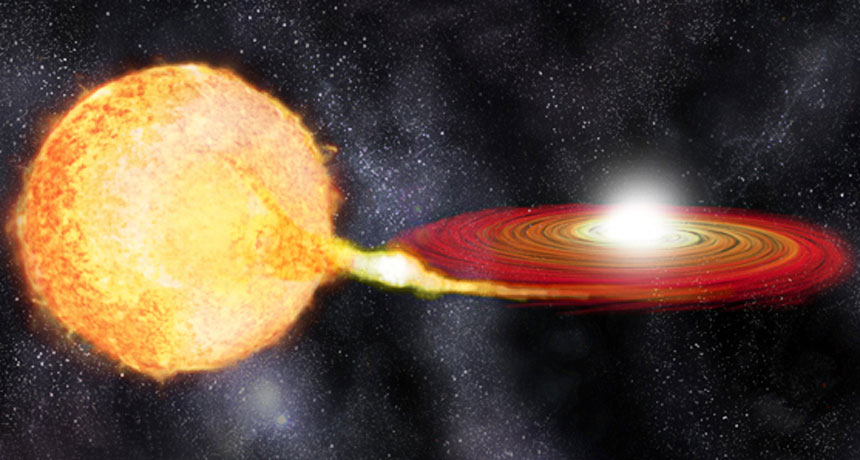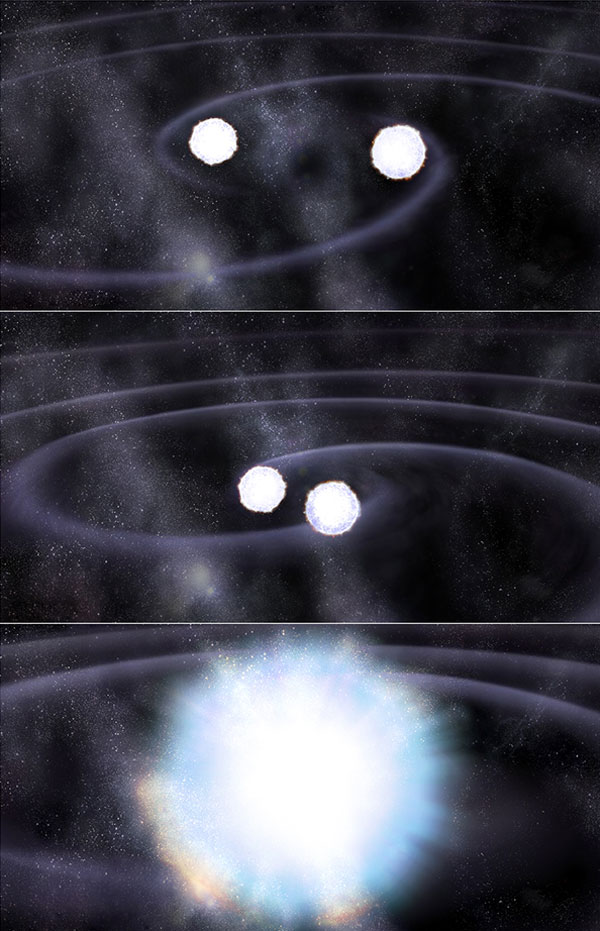
BLOWING UP New observations can’t confirm the source of type 1a supernovas. One idea suggests that the explosions are triggered when a white dwarf (right) pulls too much gas off a nearby companion (left), as seen in this artist’s illustration.
M. Weiss/CXC/NASA
- More than 2 years ago
Radiation pouring out of a nearby supernova is giving astronomers an in-depth look at the aftermath of a stellar explosion. The unprecedented peek has revealed never-before-seen details of how gamma rays are produced by such detonations. Although these observations confirm some long-held predictions, the debate continues about what causes some supernovas to explode.
The nearby explosion, named SN 2014J, is one of a class of powerful supernovas known as type 1a, which can outshine an entire galaxy and are used as evidence for the accelerating expansion of the universe. SN 2014J, discovered in January (SN Online: 1/22/14), is right next door cosmologically speaking: a mere 11 million light-years away in the M82 galaxy. Type 1a’s are rare. The last time astronomers saw one as close was 1972, when they weren’t able to make such detailed observations.
Eugene Churazov, an astrophysicist at the Max Planck Institute for Astrophysics in Garching, Germany, and colleagues used the European Space Agency satellite INTEGRAL to discover the gamma rays, which appear to come from the radioactive decay of cobalt formed days after the explosion. By measuring the brightness of the gamma rays, Churazov’s team determined that the supernova created roughly 1 billion billion billion metric tons — about 60 percent of the sun’s weight — of nickel, which in turn decayed into cobalt. The cobalt was also hurtling out at nearly 10,000 kilometers per second, the team reports in the Aug. 28 Nature. Because the cobalt is unstable, researchers had a window of only a few months to find these gamma rays.

Churazov says the data are consistent with a long-held view: the explosion of a white dwarf after siphoning off too much gas from an orbiting companion star. Under this scenario, scientists should find lots of gas surrounding the supernova that was previously belched out by the companion. The shockwave from the explosion should in turn produce radio waves as it slams into this gas.
But that’s not what another team of astrophysicists found. Miguel Pérez-Torres of the Institute of Astrophysics of Andalusia in Granada, Spain, and colleagues didn’t detect any gas while observing the supernova with multiple radio telescopes. The absence of gas, the team suggests in the Sept. 1 Astrophysical Journal, supports the idea that SN 2014J erupted when two white dwarfs, locked in a deadly gravitational embrace, collided.
Churazov and Pérez-Torres both admit that neither of these observations can rule out nor confirm either theory. Ongoing observations at other wavelengths of light could help, but scientists hope to discover clues in pre-explosion images or from a companion star left behind after the detonation. So far, searches have turned up nothing. But, astronomers want to resolve the debate because understanding how type 1a supernovas explode could reveal more about the accelerated expansion of the universe and the mysterious mechanism that’s tearing it apart.







